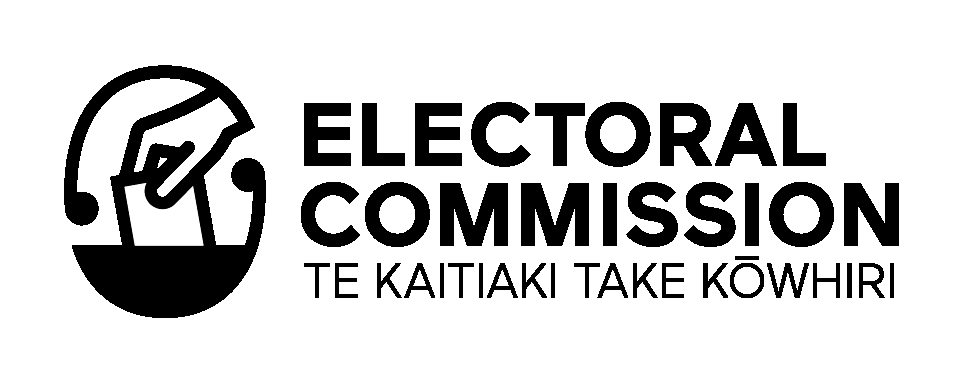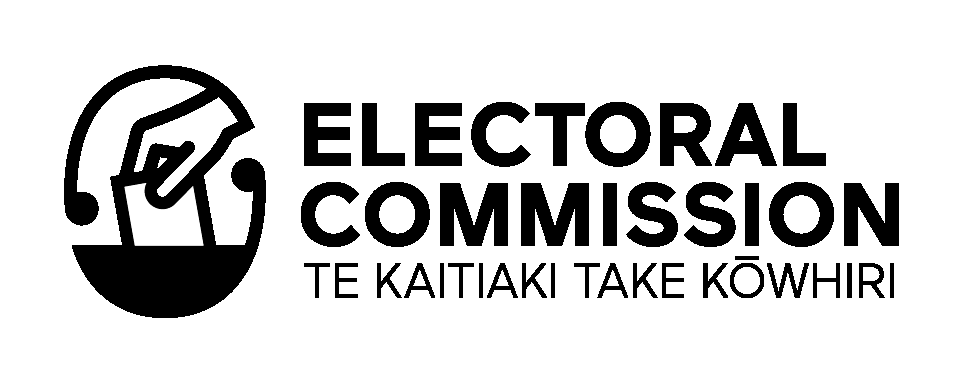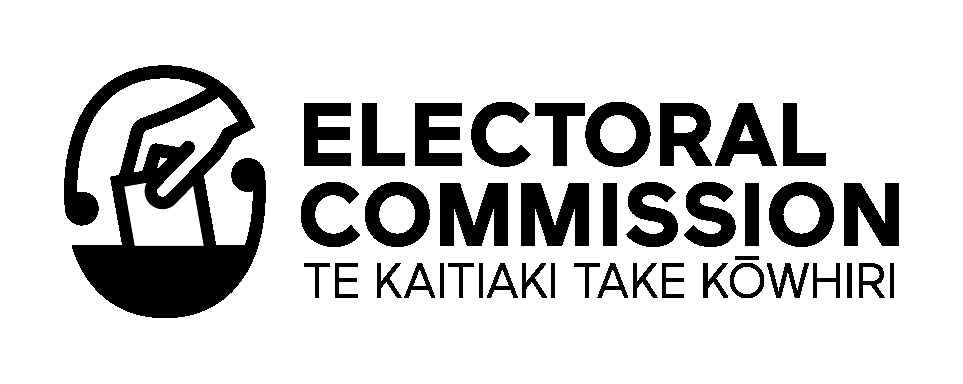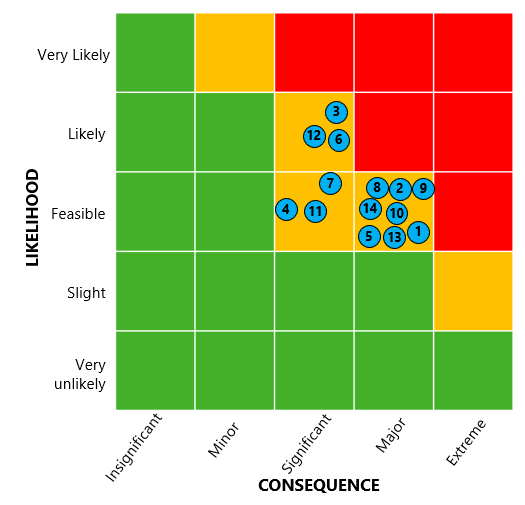




Electoral Commission
Performance Report
1 July – 30 September 2022
Highlights
Organisation
Preparation
Delivery
New regional
Local election enrolment
Tauranga by-election
structure
update campaign completed
successful y concluded
implemented
Performance measures
Our delivery against performance measures for the period of 1 July – 30 September 2022 is
detailed in Appendix A.
We have met most of our measures for the quarter, except for those under Impact Measure 2 –
‘People take part in the electoral system’. These measures relate to end-of-year targets to be
achieved by 30 June 2023. The four measures in this area al relate to enrolment campaigns that
are focused on General Election years and are on track to meet the specified targets by 30 June.
Under Output Measure 4 – ‘Make it easy and simple for people to take part’, the Q1 result of
36.5% for the percentage of enrolment transactions that are conducted digital y, is below the
40% end-of-year target. This measure general y fluctuates throughout the reporting year, but we
are confident the ful year result wil meet the SPE target.
Key upcoming milestones
31 October 2022
Election Access Fund launch
9 November 2022
Annual Report draft considered by Board
10 December 2022
Hamilton West by-election
Page | 1




Electoral Commission
Performance Report
1 July – 30 September 2022
Strategic priorities
Building our capability
Quarter 1 saw further implementation of the new structure and ways of working resulting from
the Target Operating Model.
Following the implementation of the new regional structure on 22 August, an implementation
plan was developed to set out further work to be completed in the medium term (to December
2022) and the longer term (from January 2023 onward) to further realise the benefits from the
Regional Review. A Board paper was prepared to note the plan, target state for each stream and
the associated risks and mitigations. The closing of offices is complete as of 30 September with
updating process maps and documentation to be completed in mid-October.
Invitations to our Have Your Say 2022 staff engagement survey were sent out. Employees have
until 12 October to complete this.
An initial cultural analysis for the Target Operating Model (TOM) programme’s culture workstream
has been recently completed and wil be updated to include the data from the engagement
survey. This work will inform how the Commission wil move to a more consistent culture that wil
drive operational alignment and support increased engagement.
The second workshop of Senior Leadership Group members was undertaken on 20 September to
further develop future operating arrangements and introduce the group to Ngā Maihi hioterā, our
Māori Strategic Plan.
Preparing for an election
As at 30 September our involvement in the local authority election continued to meet milestones,
and the post-election review was underway. The three centralised enrolment processing centres
were fully operational and focused on meeting local election demand. Around 340,000 forms
have been processed, with consist of 59% online forms and 41% paper forms. The processing
activities wil be concluded on 13 October. Community engagement teams have been delivering a
ful programme of work to support community events, meetings, and council briefings leading to
the election day on 8 October. There are many activities planned for after the local elections to
build up the momentum for the upcoming General Election.
After consultation on the Election Access Fund (EAF) closed on August 12, responses were
collated, and a summary sent to respondents. The survey responses also informed the candidate
application guidelines and the EAF policy. A separate document has been drafted to offer
guidance on becoming a candidate. A campaign is prepared to raise awareness of the EAF once
it’s open. Creative concepts are being considered and the EC is working with an agency that
specialises in communications for disabled people to ensure it meets the audience's needs.
Page | 2





Electoral Commission
Performance Report
1 July – 30 September 2022
Four community members have been selected for the EAF Applications Panel. All are disabled
people with extensive community experience, and one has Tikanga Māori expertise. This group
wil make recommendations to the Commission on approval of fund applications.
The Māori Electoral Option project team is continuing to plan for a 31 March 2023
implementation date. Work within the Enrolment and Community Engagement team continues to
identify areas where MEO requirements and delivery will overlap with those for the General
Election, and an initial meeting has been held with NZ Post on mailout requirements for both
projects.
Building relationships and understanding
In our MFAT-funded international liaison programme we have continued to support the Tokelau
Chief Electoral Officer in the review of the Tokelau electoral laws and associated resources for
electoral officials and voters. An advisor was in Tokelau for two weeks in September to work with
the senior officials on the rules and manuals.
The Commonwealth Elections network has confirmed their Pacific conference to be held in
Wellington, 7-11 November. There wil be 11 Commonwealth election management bodies (EMB)
from the Pacific invited and five non-Commonwealth countries. We will be jointly co-facilitating
this conference, which has the theme of absentee voting. Social media comments and messages
reduced after the completion of the local elections enrolment update campaign. Our most
successful post (on Facebook, Instagram and Twitter) celebrated Suffrage Day on 19
September:
Page | 3




Electoral Commission
Performance Report
1 July – 30 September 2022
Support for the Independent Electoral Review Panel continues, including working on information
requests and preliminary work on the Commission’s submission to the Panel.
Preparing for the future
A refresh of our Health, Safety and Wellbeing Policy is underway, with a draft policy due to go out
for consultation soon. A small group provided initial feedback on a draft by 30 September. We
received a great response to this request for initial feedback.
Key activities
• Centralised our Enrolment Processing to three centres based in Auckland, Wel ington and
Christchurch, and nine Community Engagement hubs based in Whangārei, Auckland,
Hamilton, Rotorua, Gisborne, Napier, Wel ington, Christchurch and Dunedin.
• Welcomed our three new Deputy Chief Executives, Lucy Hickman, Anusha Guler and Leigh
Deuchars.
• Commenced a headquarters simulation to test a number of changes made to the core
election management system (EMS). The test wil look to confirm that the instructions,
systems, and processes provided to Electorate HQ Managers are fit for purpose and integrate
as expected with other Commission systems.
• Readied our new Financial Management Information System (FMIS) for implementation.
• Returned the writ for the Tauranga by-election on schedule, 7 July.
Risks
While al of the risks for this quarter sit at medium, we continue to closely watch our risk around
‘
Insufficient funding and/or lack of certainty about funding’, as highlighted in the risk dashboard
in Appendix C. Our multi-year appropriation was confirmed in September, which has helped to
mitigate this risk, however we continue to monitor costs associated with by-elections and the
potential implementation of the Māori Electoral Option Bil .
We continue to watch world supply chains as they impact the delivery of key items for the 2023
General Election, including, in particular, paper and IT equipment. To help mitigate this risk, we
brought forward the paper procurement process to early 2022 and are planning for the purchase
of IT equipment earlier this electoral cycle.
Financial performance
Expenditure – At the end of September 2022 the Commission had spent $14.9m against
planned spend of $20.0m, a positive variance of $5.1m.
Page | 4




Electoral Commission
Performance Report
1 July – 30 September 2022
The underspend represents a timing difference as some costs have not been incurred as
anticipated and other projects have been delayed or deferred to focus on priorities.
Revenue – Was lower than budget by $0.6m. This is mostly attributable to revenue expected
from MFAT. The Commission recognised revenue of $0.5m from MFAT to fund expenses relating
to the International Assistance Programme. This was lower than planned but reflects the actual
costs of the programme (refer to Appendix B for financial information as at 30 September 2022).
Financial sustainability
The Commission’s current financial sustainability status (using the measures established by the
Ministry of Justice’s Monitoring Unit) is summarised below.
Measure
Test
Forecast Actual Notes
Cash
Cashflow for the three- Pass
Pass
Positive by $7.6m as at 30
month period is
September 2022.
positive
Working Capital Current assets exceed Pass
Pass
Positive by $9.3m as at 30
current liabilities
September 2022.
Going concern
Total assets exceed
Pass
Pass
Positive by $12.4m as at
total liabilities
30 September 2022.
Break even
The net operating
Pass
Pass
The result for the period is
result for the period is
a $7.1m surplus against a
a surplus
budgeted deficit of $0.4m.
This is a favourable
variance for the period of
$4.5m (due to timing).
Appendix A – Performance measures as at 30 September 2022
Results in green font are at or above target levels, results in brown font are below.
The tables below report on the measures from the Commission’s Statements of Intent and
Performance Expectations.
Impact Measure 1 – People have trust and confidence in the electoral system
Measures
Current Status Target
2022/23
Key general election milestones achieved (refer Output
On Track
Achieved
Measure 2)
Transition to new operating model phase 1 complete:
On Track
Achieved
• General Election implementation programme established
(by 31
• Reconfigured Senior Management Team structure
December
• Implementation of new delegations policy
2022)
• Proposal for reconfigured field operations finalised
Integrity of by-election results: Official by-election Result
Completed
Completed
Certificates for the electorate are signed by both the
(Tauranga by-
if
electorate Returning Officer, and the attending Justice of the election)
applicable
Peace
Page | 5
link to page 6




Electoral Commission
Performance Report
1 July – 30 September 2022
Impact Measure 2 – People take part in the electoral system
Measures
Current Status Target
2022/23
Number of people enrol ed (average for the period)
3.43m
3.64m
Number of 18–24-year-olds enrolled (average for the
0.27m
0.34m
period)
Number of people of Māori descent enrolled (average for
0.51m
0.525m
the period)
Number of people enrolled on the Provisional Roll (17-
0.0047m
0.0065m
year-olds)
Output Measure 1 – Maintain and protect the integrity of the electoral system
Measures
Current Status
Target 2022/23
Adherence to the Commission’s quality assurance
100%
100%
practices around the integrity of the rol
Staff receive mandatory integrity and compliance
100%
1
100%
training
The Commission will follow up failures by a party,
100%
>95%
candidate or third party to file any relevant return of
election expenses, donations or loans within 5
working days
Al egations of electoral finance or advertising
100%
90%
breaches of the Electoral Act are acknowledged, and
follow-up is initiated if required, within 10 working
days of receipt
Output Measure 2 – Prepare for and conduct wel -run, risk-mitigated electoral events
Measures
Current Status
Target 2022/23
Key general election preparation milestones
achieved:
a) IT procurement complete (Q2)
All on track
b) Core elections systems ready (Q2)
Achieved
c) Electorate headquarters secured (Q2)
d) Returning officers trained (Q3&4)
e) Electorate headquarters managers
appointed and trained (Q4)
1 We believe that nearly all staff comply but we cannot guarantee that all staff complete the modules due
to: the nature of recording logins and completions on staff training portal Tupu; the Commission workforce,
which is transient and changeable; and organisational reviews that affect the accuracy of roles, structure
and coding in Tupu. There may be isolated incidents where individuals do not complete training modules,
and some casual employees do not have access to computers.
Page | 6




Electoral Commission
Performance Report
1 July – 30 September 2022
f) Electorate headquarters operational (Q3)
g) Overseas vote processing operational (Q3)
h) Readiness testing and dress rehearsal
All on track
programme begins (Q4)
Achieved
Enrolment data update for Local Body
Achieved
Achieved
Elections complete (Q1)
Simulation of key activities to be
On track
Achieved
undertaken by headquarters during the
general election complete (Q2)
By-election conduct measures (if
applicable):
Achieved for
Achieved
•
Release of preliminary results from 7.30pm on Tauranga by-
the day of the by-election
election
•
Declaration of official results to schedule
Output Measure 3 – Help people to understand the electoral system
Measures
Current Status
Target 2022/23
Strategic Communications Plan developed
On track
By December
2022
Respondents agree or strongly agree that the
100%
>80%
advisory opinion was timely and adequately answered
their request
Output Measure 4 – Make it easy and simple for people to take part
Measures
Current Status
Target 2022/23
Percentage of enrolment transactions that are
36.5%
>40%
conducted digital y
Participation strategies for priority groups developed
On track
By 31 January
2023
Election Access Fund established
On track
By 31 October
2022
Guidance on electoral matters: Percentage of
100%
>95%
advisory opinions issued within 5 working days
Page | 7




Electoral Commission
Performance Report
1 July – 30 September 2022
Appendix B – Financial information as at 30 September 2022
Statement of revenue and expenses
For the three months ending 30 September 2022
YTD
Ful Year 2022/23
30-Jun-22
Actual
Budget Variance Forecast Budget Variance Actual
$000
$000
$000
$000
$000
$000
$000
REVENUE
Funding from Crown
21,
183
20,
690 494
82,
758 82,
758 -
25,
618
Interest Received
5 1
5
2
2
-
3
Other Income
207
43
165
170
170
-
458
International Assistance Programme
549
856
( 307) 3,
423 3,
423 -
1,
870
Total Revenue
21,
944 21,
588 356
86,
353 86,
353 -
27,
949
EXPENDITURE
Personnel and Board Fees
6,
865 9,
079 2,
214 36,
317 36,
317 -
18,
796
Computer & Telecommunications
874
1,
377 503
5,
508 5,
508 -
2,
464
Property & Occupancy
675
1,
885 1,
210 7,
539 7,
539 -
2,
455
Specialist Services
3,
251 4,
446 1,
195 17,
782 17,
782 -
11,
096
Printing, Stationery & Postage
2,
800 3,
137 337
12,
546 12,
546 -
760
Depreciation and Amortisation Expense
135
290
155
1,
158 1,
158 -
643
Audit Fees
20
23
3 91
91
-
95
Other Costs
256
1,
745 1,
489 6,
979 6,
979 -
653
Total Operating Expenditure
14,
876
21,
980 7,
104 87,
920 87,
920 -
36,
962
Surplus / (Deficit)
7,
068 ( 392) 7,
460 ( 1,567) ( 1,567) -
( 9,013)
Page | 8




Electoral Commission
Performance Report
1 July – 30 September 2022
As at 30 September 2022
2022/23 Forecast
2022
Actual
Budget Variance Forecast Budget Variance Actual
$000
$000
$000
$000
$000
$000
$000
CURRENT ASSETS
Cash and cash equivalents
16,
103
12,
927
3,
176
6,
112
6,
112
-
8,
524
Debtors and other receivables
16
40
(
24)
1,
025
1,
025
-
3,
155
Inventory
41
120
(
79)
185
185
-
44
Prepayment
327
101
226
180
180
-
107
Total current assets
16,
487
13,
188
3,
299
7,
502
7,
502
-
11,
830
NON-CURRENT ASSETS
Property, plant and equipment
687
581
106
576
576
-
712
Intangible assets
2,
454
1,
911
543
2,
306
2,
306
-
2,
101
Total non-current assets
3,
141
2,
492
649
2,
882
2,
882
-
2,
813
TOTAL ASSETS
19,
628
15,
680
3,
948
10,
384
10,
384
-
14,
643
CURRENT LIABILITIES
Revenue in Advance
4,
703
4,
323
(
380)
2,
296
2,
296
-
4,
743
Creditors and other payables
1,
111
875
(
236)
2,
100
2,
100
-
2,
605
Employee entitlements
1,
383
1,
700
317
1,
516
1,
516
-
1,
932
Total current liabilities
7,
197
6,
898
(
299)
5,
912
5,
912
-
9,
280
NON-CURRENT LIABILITIES
Employee entitlements
56
56
-
95
95
-
56
Total Non-current Liabilities
56
56
-
95
95
-
56
TOTAL LIABILITIES
7,
253
6,
954
(
299)
6,
007
6,
007
-
9,
336
NET ASSETS
12,
375
8,
725
3,
650
4,
377
4,
377
-
5,
307
Equity
Opening Equity
5,
307
5,
944
(
637)
5,
944 5,
944
-
14,
320
Accumulated Surplus / Deficit
7,
068
2,
781
4,
287
(
1,567)
(
1,567)
-
(
9,013)
Total taxpayers' funds
12,
375
8,
725
3,
650
4,
377
4,
377
-
5,
307
Page | 9




Electoral Commission
Performance Report
1 July – 30 September 2022
Statement of cash flows
For the three months ending 30 September 2022
YTD
Ful Year 2022/23
2021/22
Actual
Budget Variance Forecast Budget Variance Actual
$ (000)
$ (000)
$ (000)
$ (000)
$ (000)
$ (000)
$ (000)
CASH FLOWS FROM OPERATING ACTIVITIES
Receipts from Crown
27,
591 25,
921 1,
670 84,
643 84,
643 -
24,
052
Interest received
5
0
5
2
2
-
3
Receipts from other revenue
28
411
( 383) 170
170
-
130
Payments to Employees
(
5,822) ( 8,358) 2,
536 ( 36,007) ( 36,007) -
(
17,038)
Payments to Suppliers
( 13,789) ( 11,966) ( 1,823) ( 48,748) ( 48,748) -
(
21,385)
Net cash flow from operating activities
8,
013 6,
009 2,
004 60
60
-
(
14,238)
CASH FLOWS FROM INVESTING ACTIVITIES
Purchase of property, plant and equipment ( 18) ( 33) 15 ( 135) ( 135) -
-
Purchase of intangible assets
(
416) ( 255) ( 161) ( 1,019) ( 1,019) -
( 503)
Net cash flows from investing activities
(
434) ( 288) ( 146) ( 1,154) ( 1,154) -
( 503)
Net increase/(decrease) in cash and cash
equivalents
7,
579 5,
721 1,
858 ( 1,094) ( 1,094) -
( 14,741)
Cash and cash equivalents at beginning of
year
8,
524 7,
206 1,
318 7,
206 7,
206 -
23,
265
CASH AND CASH EQUIVALENTS HELD AT
YEAR END
16,
103 12,
927 3,
176 6,
112 6,
112 -
8,
524
Page | 10





Electoral Commission
Performance Report
1 July – 30 September 2022
Appendix C – Electoral Commission risk dashboard
Heat Map (by Risk ID)
ID Risk
1
Loss of trust in the electoral system
2
Failing to build and maintain trusting relationships with Māori
3
Being unable to respond sufficiently to a major disruptive event, including a pandemic
4
Inability to deliver successfully or meet expectations due to insufficient funding
5
Commission’s reputation for neutrality is jeopardised by ‘politicisation’ and pressure from
key stakeholders
6
Critical supplier fails to deliver
7
Failing to deliver on strategic objectives
8
Failing to prevent or respond adequately to a cyber security incident
9
Critical system failure at a critical time
10 Failing to successfully implement critical legislative and/or regulatory change
11 Failing to meet obligations to implement robust health, safety and wellbeing practices
12 Over-reliance on core staff results in critical points of failure
13 Failing to understand and/or connect with the wider environment results in unforeseen
consequences and/or limits our resilience
14 Inadequate planning and implementation results in poorly embedded organisational
change
Page | 11














































